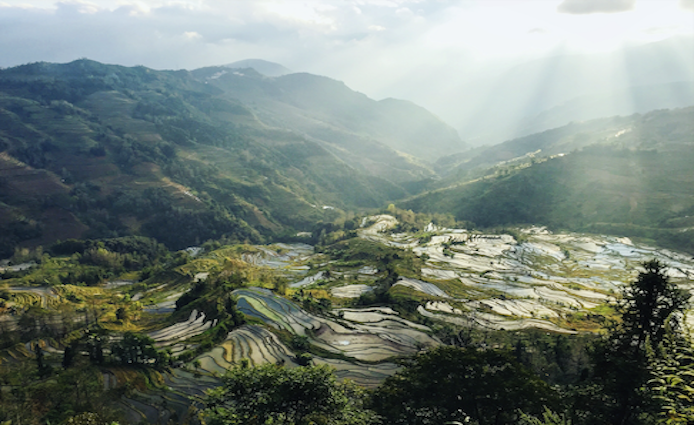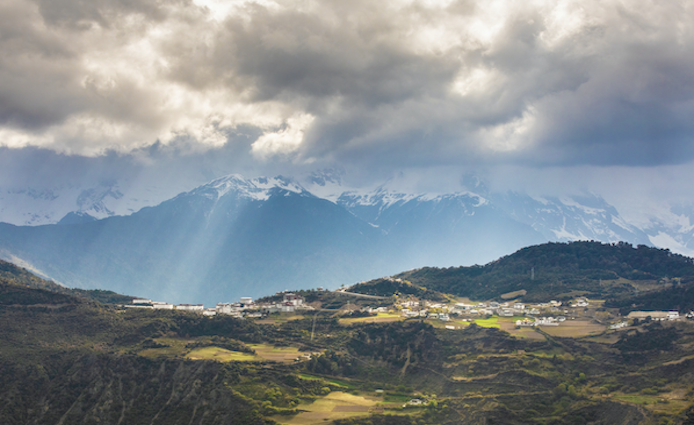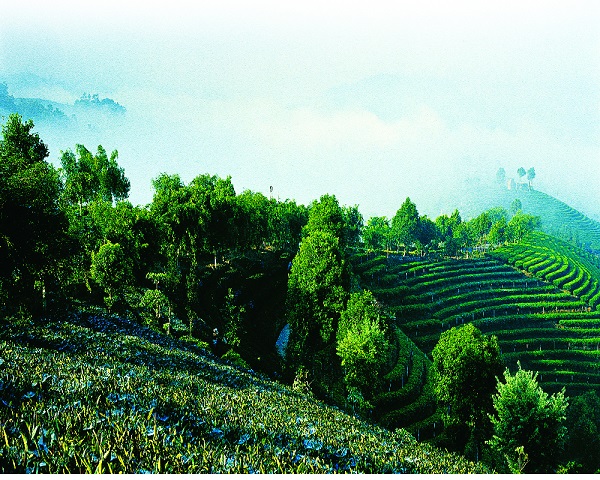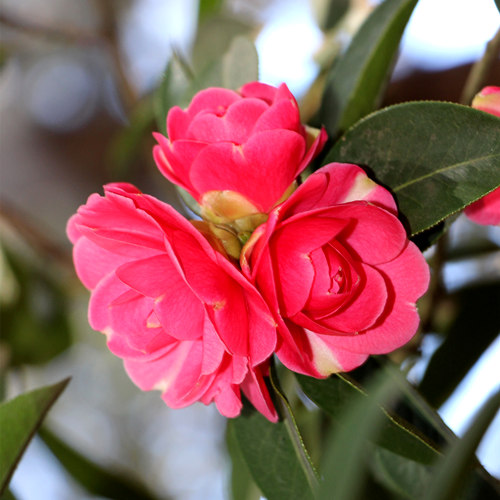
Cultural Landscape of Honghe Hani Rice Terraces (1)
The Honghe Hani Rice Terraces are the system of Hani rice-growing terraces located in Honghe Prefecture, Yuanyang County, Yunnan, China. The terraces' history spans around 1,200 years. In 2013, the Honghe Hani Rice Terraces were listed as a World Heritage Site, because of their outstanding resilient construction, unique social-ecological system, and importance to the Hani people.
On the south banks of the Hong River in the mountainous terrain of southern Yunnan, the Honghe Hani Rice terraces cascade down the towering slopes of the Ailao mountains. Carved out of the dense forest over the past 1,300 years by Hani people who migrated here from further to the north-west, the irrigated terraces support paddy fields overlooking narrow valleys. In some places, there are as many as 3,000 terraces between the lower edges of the forest and the valley floor.

Responding to the difficulties and opportunities of their environment of high mountains, narrow valleys crisscrossed by ravines, extremely high rainfall (around 1400mm), and sub-tropical valley climate, the Hani people have created out of dense forest an extraordinarily complex system of irrigated rice terraces that flows around the contours of the mountains.
The landscape reflects an integrated four-fold system of forests, water supply, terraces, and houses. The mountain top forests are the lifeblood of the terraces in capturing and sustaining the water needed for irrigation. There are four types of forests, the ancient ‘water recharge’ forest, a sacred forest, consolidation forests, and village forests for the provision of timber for building, food, and firewood.

Eighty-two relatively small villages with between 50 and 100 households are constructed above the terraces just below the mountain top forests. The traditional vernacular buildings have walls built of rammed earth, adobe bricks, or earth and stone under a tall, hipped, roof thatched with straw that gives the houses a distinctive ‘mushroom’ shape. At least half the houses in the villages are mainly or partly of traditional materials.
Each household farms one or two ‘plots’ of the rice terraces. Red rice is produced on the basis of a complex and integrated farming and breeding system involving buffalos, cattle, ducks, fish, and eels. This system is underpinned by long-standing traditional social structures, based on symbiotic relationships between plants and animals that reinforce communal obligations and the sacredness of nature.

The Honghe Hani rice terraces are an exceptional reflection of a resilient land management system that optimizes social and environmental resources and demonstrates extraordinary harmony between people and their environment in spiritual, ecological, and visual terms.
Reference: UNESCO World Heritage Convention
Photo Resource: Unsplash
If there's any copyright issue involved, please contact us to delete.



